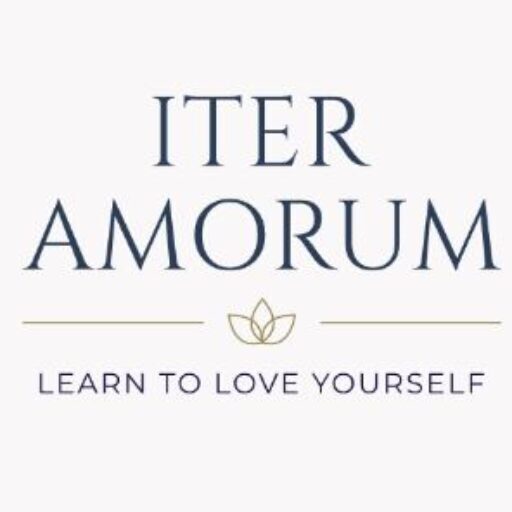Published on September 29, 2024
 Talmud and midrash haLAkhah | Abstract The Seven Middots in Mishna, Talmud, and Midrash Halakhah Nicoleta Spiridon Early Jewish Text Interpretation – Principles and Techniques |
INTRODUCTION AND OBJECTIVE
The Mekhilta d’Rabbi Ishmael and the Talmud are foundational texts in Rabbinic Judaism, but they serve distinct purposes and come from different eras. The Mekhilta focuses on interpreting and deriving legal rulings (halakha) from the book of Exodus. Its authorship is uncertain, though Rabbi Ishmael is associated with it. (e.g. Hoffman – Stemberger, 2013, p. 199). Scholars believe the final compilation occurred sometime in the 3rd century CE.
The Talmud, a work of unparalleled breadth, encompasses the entire Mishnah (a collection of Jewish oral traditions) and extensive commentary on it, known as the Gemara. It investigates legal discussions (halakha) across the Hebrew Bible and beyond and explores narratives, legends, and ethical teachings (aggadah). The Babylonian Talmud, compiled around the 5th century CE, is the more influential and widely studied version. (Stemberger, 2013, p. 203)
The Mekhilta offers a specific legal lens for understanding Exodus (Stemberger, 2013, p. 201), while the Talmud is a vast and ongoing conversation about Jewish law, ethics, and narratives across the Hebrew Bible. The Talmud incorporates and references earlier works like the Mekhilta, demonstrating the dynamic development of Rabbinic thought.
The objective of this paper is to analyse the seven middots of Hillel, focusing on the Mekhilta and Emmanuel Levinas’ article, ”As Old as the World”, which will serve as an illustration that offers insights into the teachings of Hillel from philosophical and ethical perspectives. Additionally, this study will explore the nuanced relationship between these foundational texts of Judaic thought. The research in this paper aims to contribute to a deeper understanding of the timeless relevance and profound implications of Hillel’s middots within the broader context of Jewish ethics and intellectual discourse.
RESULTS
- Mekhilta d’Rabbi Ishmael is an early halakhic midrash (the result of derash – דרש to investigate – a method of interpreting a passage in a more artificial way) (Mielziner, 1902, p. 118) on Exodus. The Tractate Amalek, from Mekhilta, refers to the battle with Amalekites who attacked Israel unprovoked at Rephidim (Exodus 17:8), beginning with the following:
“And Amalek came”: This verse is recondit and is explained by (Iyyov 8:11): “Can the rush grow without swamp? Can grass grow without water?” So, Israel is without the Torah. And because Israel separated from the Torah, the foe (Amalek) came upon them. For the foe comes only by reason of sin and transgression. Thus, “And Amalek came, etc.”
As previously observed, Exodus 17:8 reports the arrival of Amalek to the territory of Rephidim. This passage is elucidated by Job 8:11, wherein the rhetorical question is posed, “Can papyrus grow without a marsh? Can rushes prosper without water?”
The midrash explanation for the action of Amalek to come to Rephidim to attack, without any specific reason, the people of Israel is that the Israelites became weak in their duty to learn the Torah, meaning to respect the 22 (Teach Torah to your children) and 76 (Recite the central prayers twice daily and always study Torah, wherever you are) laws imposed on them by the sacred text. (James Madison University, 2018)
In other words, if a plant, no matter how significant (as the papyrus) or common (as the grass), needs water to gain power and to conceive, how can the people of Israel live and thrive without learning the Torah, which IHWH gave to them? The action of the people of Israel to renounce the learning to Torah is suggested by Mekhilta d’Rabbi Ishmael through the following:
Others say: “Refidim” is acronymic for “rifyon yadayim” (“weakness of hands”). Because the hands of Israel had weakened in Torah study, the foe came upon them, this transpiring only because of “weakness of hands” in Torah study.
The concept of “weakness of the hands” is often associated with those who have lost faith in IHWH, as illustrated in the Mekhilta text. According to the rabbis, Moses secured victory for the Israelites against the Amalekites by raising his hands; conversely, when he lowered his hands, his people suffered defeat. To ensure the success of his people, Moses received assistance in holding his hands aloft throughout the battle.
Based on our analysis, the Mekhilta Tractate Amalek employs the derash as its primary method of interpretation. This approach allows us to arrive at a Midrashic conclusion that emphasises the importance of Torah study as the primary activity for the Jewish people.
To provide context for the preceding statement, it is necessary to acknowledge that Moses’ hands symbolise the Torah. As we recall, on Mount Sinai, Moses received the Tablets of the Law in his hands, making them tangible vessels of God’s words. Therefore, when Moses’ hands were lowered, the Israelites appeared to falter in battle, and conversely, when his hands were raised, they were victorious against the Amalekites.
According to tradition, the hands represent the Torah, and water symbolises faith. The people of Israel, however, have weakness in their hands, meaning they are not sufficiently studying the sacred text. This is akin to plants that lack water and the proper environment for growth.
As Hillel elucidated, the preceding analysis includes two middots. The first one is Qal Vahomer Satum (because, as we will see, it is only suggested), which can be applied as follows: Object A, which represents water, is vital to the survival of plants and, therefore, essential. Object B, which represents Torah study among the Jewish people, is similarly critical; without it, they face spiritual death. (Mielziner, 1902, pp. 130-136)
קל – the light element – is the water, and חומר – the heavy principle – is the Torah.
The second rule that applies to Tractate Amalek is the second middot of Hillel, Gezerah Shavah (גזירה – cutting; לִשְׁווֹת – to be equal). It consists of an analogy made between two separate texts based on a similar phrase, root, or word. (Mielziner, 1902, pp. 142-144)
The place of the battle, Rephidim is (says Mekhilta) an acronym for “riphyon yadayim”, which me-ans “the weakness of the hands”.
Therefore, to apply the principle of Gezerah Shavah, Amalek came to the place named The Weakness of the Hands to fight against the dimness of the Israelites, who had forgotten that their fundamental duty was to learn and teach the Torah.
According to this midrash from Mekhilta, the words “weak” and “hand” share a common root, and it is said that failing to learn the Torah is a transgression of halachic laws 22 and 76, which assert that the Torah is a Jew’s primary responsibility. The unprovoked attack by the Amalekites serves as a demonstration of how God restores the faith of the Israelites.
- The connection between the Talmud and the halakhic midrash Mekhilta is characterised by mutual reliance and thematic coherence within the larger Jewish legal and exegetical tradition framework. (Stemberger, 2013, p. 193) The Talmud is a central text in Rabbinic Judaism, comprising the Mishnah and the Gemara, which expound upon and elucidate Jewish law and tradition. In contrast, the Mekhilta is a halakhic midrash that provides legal interpretations and commentary on the biblical text, focusing on Exodus. (Stemberger, 2013, p. 199)
Despite their differing formats and areas of emphasis, the Talmud and the Mekhilta share similarities in their legal analysis and interpretation approaches. Both texts engage in the exegetical study of biblical verses to derive legal principles and explore their practical application. Additionally, they both incorporate discussions on legal disputes, explanations for rulings, and the transmission of authoritative teachings from rabbinic authorities. (Green, 1987, p. 29-31)
Mekhlita, unlike the Talmud, used only two of the thirteen middots proposed by Rabbi Ishmael. As this commentary preceded the Talmud, it was considered the first example of a scriptural Encyclopaedia. (Stemberger, 2013, p. 202)
- Emmanuel Levinas, a notable philosopher from 1905 to 1995, set out to establish a first philosophy. While the traditional notion of first philosophy pertained to metaphysics or theology, Heidegger later redefined it as fundamental ontology. Conversely, Levinas held the view that ethics should be the primary concern of the first philosophy. However, instead of creating a moral theory, Levinas formulated his philosophy in reaction to both the metaphysical and theological perspectives. (Bergo, 2019)
His article “As Old as the World” is part of a more extensive work called Quatre lectures talmudiques, published in 1968. The book was later translated into English and titled Nine Talmudic Readings.
Emmanuel Levinas interprets a passage from Mishna, which Gemara explains using a passage from Song of Songs, in the Tractate Sanhedrin 37 of Talmud Bavli. This interpretation parallels the justice system and the aforementioned erotic poem.
The Gemara passage, used by Emmanuel Levinas, is based on a derash that proposed an artificial interpretation of the composition and functionality of the Sanhedrin, which represents the supreme court of justice in Judaic tradition. Rav Aha bar Hanina responds from Song of Songs chapter 7, verse 3, to the question from which text this comes.
These characteristics of Sanhedrin were exposed in the fragment of Mishna, situated at the very beginning of Levinas’ article. (Levinas, 2019, p. 100)
The Gemara passage provides commentary on the concept of Sanhedrin using the middots of Hillel, specifically Qal vaHomer, and Gezerah Shaveh.
The rule of Gererah Shaveh is illustrated by comparing the Sanhedrin’s structure and the purity required of its judges with a passage from the Song of Songs that alludes to an unusual eroticism, which may seem inappropriate for a system of justice that demands clarity. Hence, the concept of justice is similar to a nourishing belly that keeps interested mouths at a distance with a fence of roses.
The Qal vaHomer Middot is represented by the idea that the light elements (the concepts of “navel”, “goblet”, “full of fragrant wine”, “heap of wheat”, “hedged about with roses”) shown in the verse of Song of Songs conduct to the more important idea of supreme, pure, and untouched justice as it is represented the Sanhedrin. The same commentary is pertained by comparing the seeds of the pomegranate and the mitzvoth comprised in the most ordinary Jew.
Although Levinas excuses himself for not being sufficiently skilled in Talmudic interpretation, he considers the Song of Songs quote perfectly adequate when explaining the Sanhedrin’s structure and functionality – We are in the presence of a stranger enterprise: an erotic text founding a court of law and a system of justice. (Levinas, 2019, p. 108)
Returning to the primary intention of Levinas’ article, which is to answer whether the world needs Judaism, the author proceeds in two directions if we compare him with the rabbis. The first direction is to follow the tradition by using, in general, the above-mentioned middots. The second one, probably dictated by his philosophical formation, is to break with the rabbinic tradition, proposing an answer to a question with another question. (Ibid.) Therefore, Emmanuel Levinas might be focusing on the multiplication of meaning. By bringing in the Song of Songs verse, Levinas might argue that the Mishna’s statement takes on a richer and more layered significance. The verse could add emotional depth or a sense of awe to studying the Torah.
DISCUSSION / SUMMARY
The Seven Middots are a set of Rabbinic tools used to carefully analyse and expand upon the legal framework of the Hebrew Bible. They are found in the Mishnah, Talmud, and Midrash Halakhah, and they provide a way to translate the often-abstract concepts of the Torah into practical guidelines for everyday life. The Seven Middots encompass a range of approaches rather than being a rigid set of rules. For example, Rabbis might draw connections between seemingly unrelated biblical passages or use the reasoning behind existing laws to infer new ones. Additionally, by identifying the root of a commandment, they could apply it in new situations in a nuanced way. The Middots were not static, either; the ability to weigh conflicting opinions ensured that they could be adapted over time. Using these methods, the Rabbis preserved Jewish law and ensured that it remained relevant and vibrant for generations to come.
BIBLIOGRAPHY
Bergo, B. (2019). Emmanuel Levinas (Stanford Encyclopedia of Philosophy). [online] Stanford.edu. Available at: https://plato.stanford.edu/entries/levinas/ [Accessed 16 Apr. 2024].
Green, W.S. (1987). Scripture in Rabbinic Judaism. Horizons in Biblical Theology, 9(1), pp.27–40.
James Madison University (2018). The 613 Mitzvot. [online] www.jmu.edu. Available at: https://www.jmu.edu/dukehallgallery/exhibitions-past-2018-2019/the-613-mitzvot.shtml.
Levinas, E. (2019). Nine Talmudic Readings. Indiana University Press.
Mielziner, M. (1902). Introduction to the Talmud. New York and London: Funk and Wagnalls Company.
Stemberger, G. (2013). From inner-biblical interpretation to rabbinic exegesis. In: The New Cambridge History of the Bible. Cambridge: Cambridge University Press (New Cambridge History of the Bible), pp.190–217.
www.jewishencyclopedia.com. (n.d.). TALMUD HERMENEUTICS – JewishEncyclopedia.com. [online] Available at: https://www.jewishencyclopedia.com/articles/10801-middot-the-seven-of-hillel.
www.sefaria.org. (n.d.). Avot DeRabbi Natan 37:9. [online] Available at: https://www.sefaria.org/Avot_DeRabbi_Natan.37.9 [Accessed 15 Apr. 2024].



